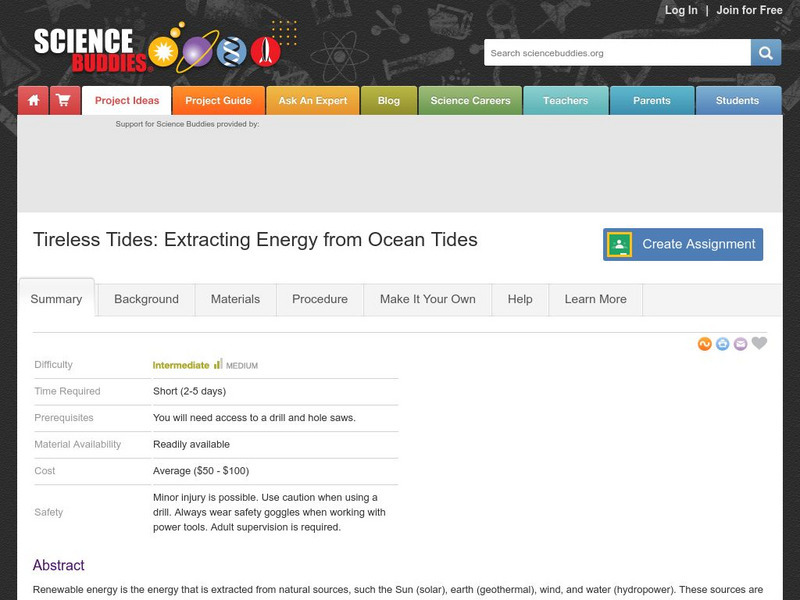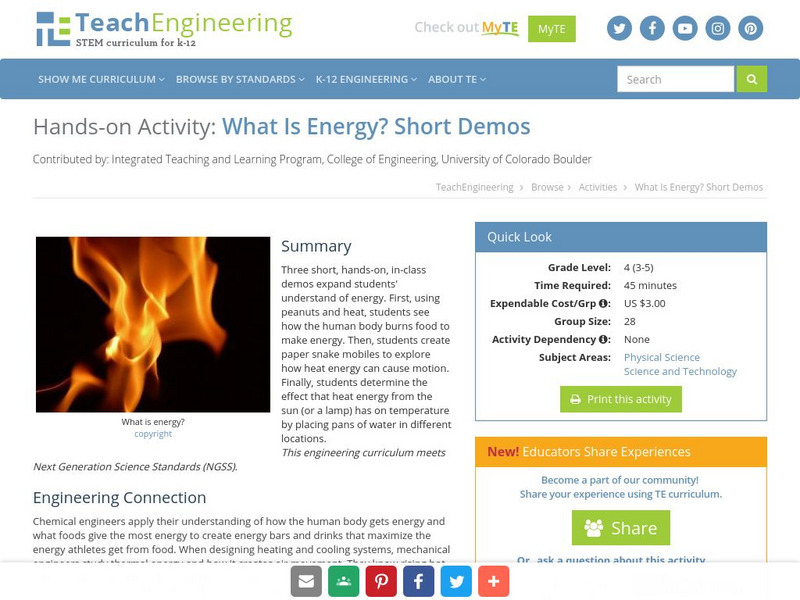Hi, what do you want to do?
Curated OER
Weather Observation Journal
Students record weather for a period of one month. In this weather lesson, students observe weather for one month on a large pictograph. Students record clouds, wind, temperature and any other weather conditions they observe. Students...
Curated OER
Build a Psychrometer
Learners understand that a psychrometer is a weather instrument used to detect humidity. In this psychrometer lesson plan, students build a psychrometer. Learners use their psychrometers to measure humidity activity.
Curated OER
Why Are Plants Green?
Students smash plant parts and wait for visibility of chlorophyl to show why plants turn green. In this green plants lesson plan, students use acetone and filter paper for this experiment.
Curated OER
Everything's Connected
Learners explore how trash decomposes. In this ecosystem instructional activity, students discuss new vocabulary words, such as producers and consumers, and think critically to answer how landfills work.
Curated OER
Plant Explorers
Pupils investigate how plants take in water, nutrients, and light. They create artwork showing how plants survive in different environments.
Curated OER
Field Trip to test Water Quality
Students examine water quality indicators,test water quality and record their results. In this water quality lesson students complete a water testing lab and complete a lab report.
Curated OER
Little Sprout
Students plant seeds. In this producers lesson plan, students compare plants and list what they have in common. They discuss what plants need in order to grow. Students then plant seeds and observe them as they grow.
Curated OER
Prairie Food Chains & Webs
Learners complete a food chain. In this ecosystem lesson, students learn about producers, consumers and decomposers. Learners identify herbivores, carnivores and omnivores and complete two worksheets.
Curated OER
Resources
In this resources worksheet, students review renewable and nonrenewable resources. Students also review how resources can be conserved. This worksheet has 7 terms in a crossword puzzle, 3 true or false, and 10 short answer questions.
Curated OER
Sunbeam Dining
Students learn at least two different things that animals eat, then construct a food chain and play a food chain game.
Curated OER
Taxonomy Project
High schoolers act as a taxonomist and, given a certain situation, classify existing organisms.
Science Buddies
Science Buddies: Tireless Tides: Extracting Energy From Ocean Tides
Renewable energy is the energy that is extracted from natural sources, such the Sun (solar), earth (geothermal), wind, and water (hydropower). These sources are renewable because they can be replenished by the same natural sources within...
TeachEngineering
Teach Engineering: What Is Energy? Short Demos
Three short, hands-on, in-class demos expand students' understand of energy. First, using peanuts and heat, students see how the human body burns food to make energy. Then, students create paper snake mobiles to explore how heat energy...
PBS
Pbs Learning Media: Solar Racing
This is an extensive project in designing and building a solar-powered car model. Students must make detailed calculations and design decisions about wheel size, gear ratio, how to get the most energy from the sun, air drag, friction,...
Ministry of Education, Sports & Culture (Samoa) Government
Mesc: Samoa School Net: Forces to Make Weather: Weather & Water Cycle
Explains three forces of nature and how they impact the weather. These include infrared rays from the sun, differences in air pressure, and wind flow when hot and cold air masses meet. Supported by lots of visuals.
Concord Consortium
Concord Consortium: Stem Resources: Greenhouse Light and Temperature
An interactive tool where students can create a model of a greenhouse and use a light sensor to measure the amount of light it receives from a lamp at various times of the day. Temperature is also measured. Data is plotted on graphs,...
CK-12 Foundation
Ck 12: Life Science: Photosynthesis
[Free Registration/Login may be required to access all resource tools.] Plants are producers, which means they are able to make their own food, as well as "food" for other organisms. Plants are also autotrophs - they collect energy from...





















